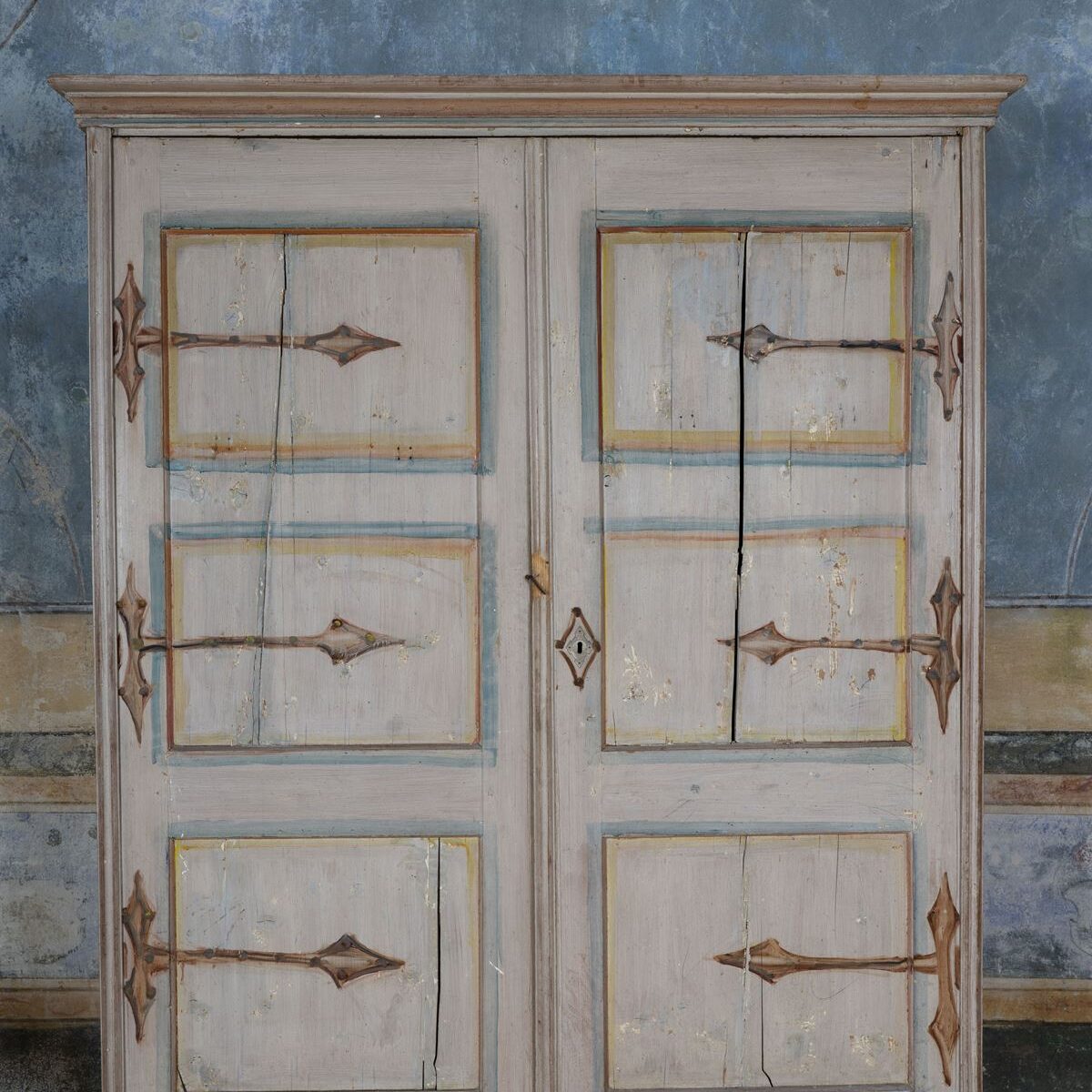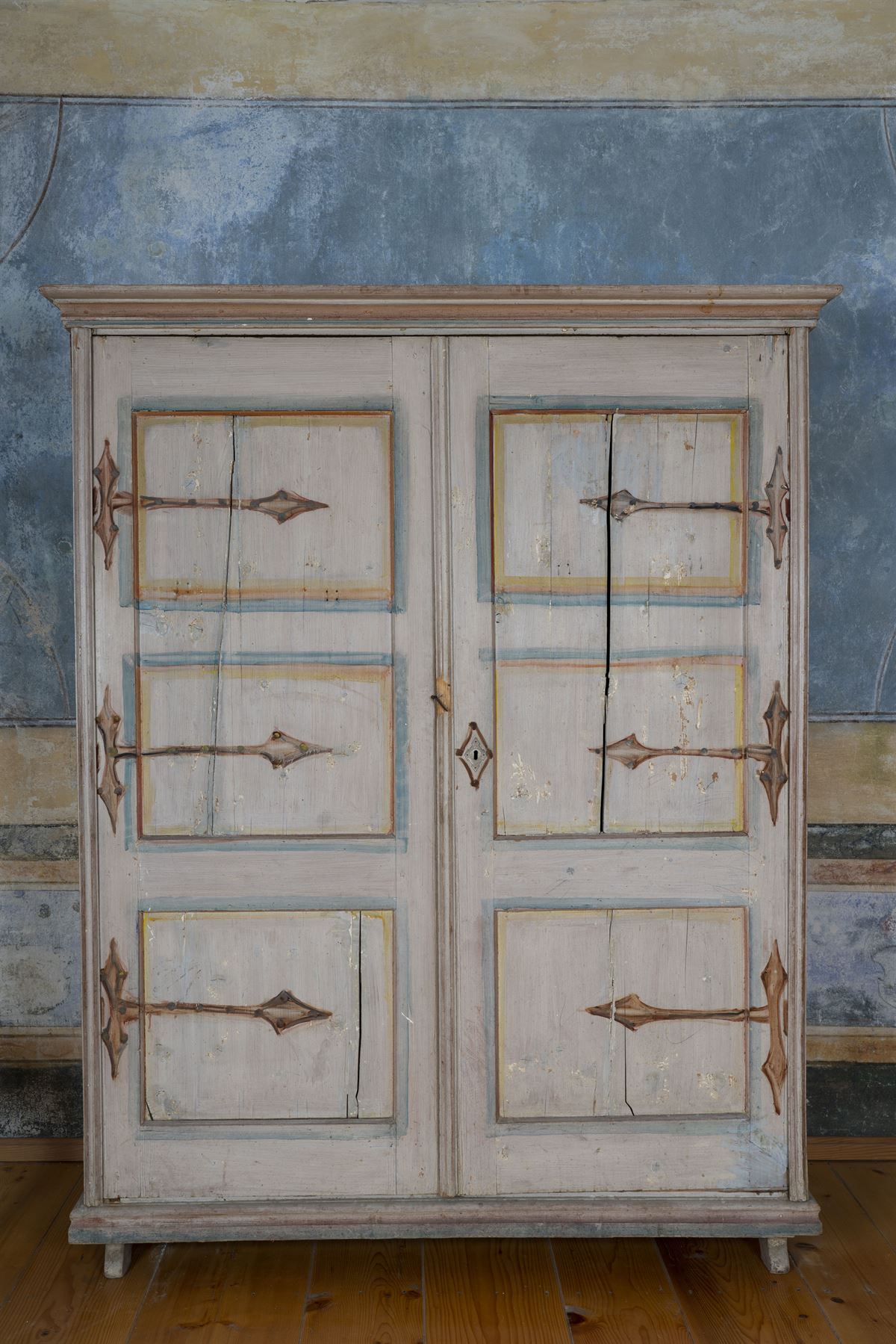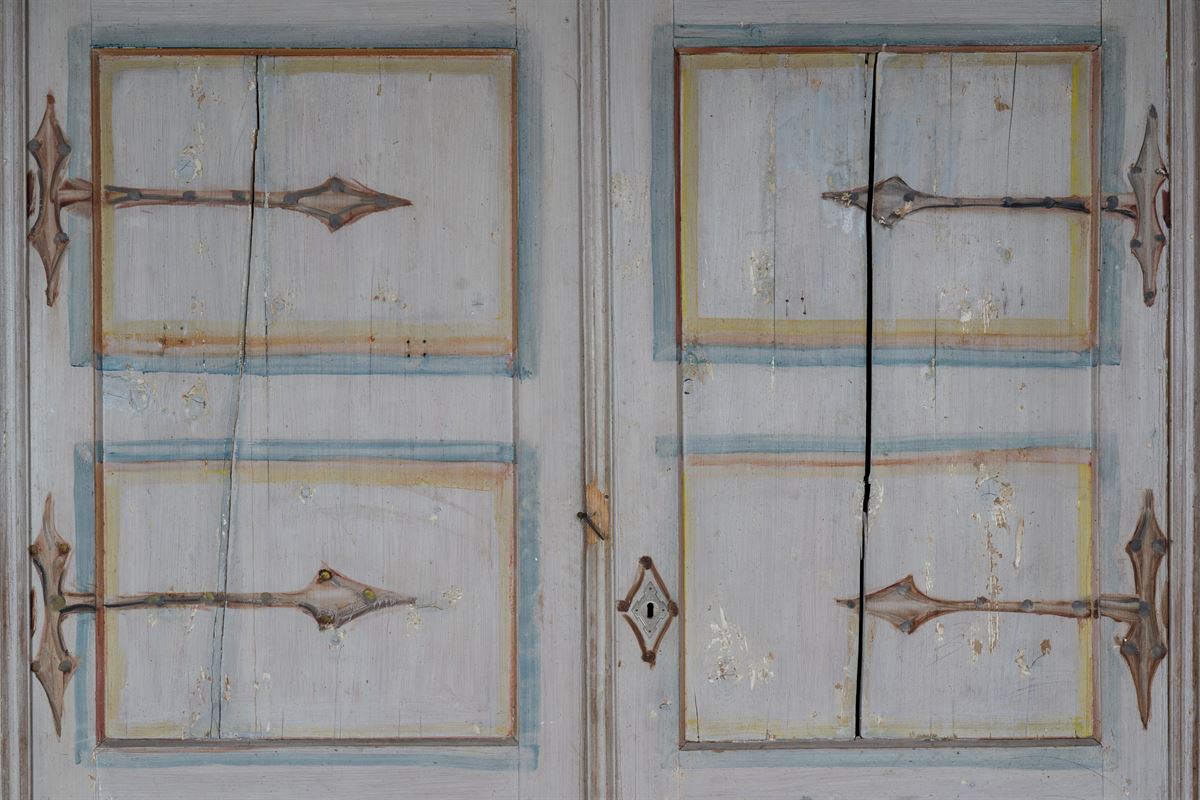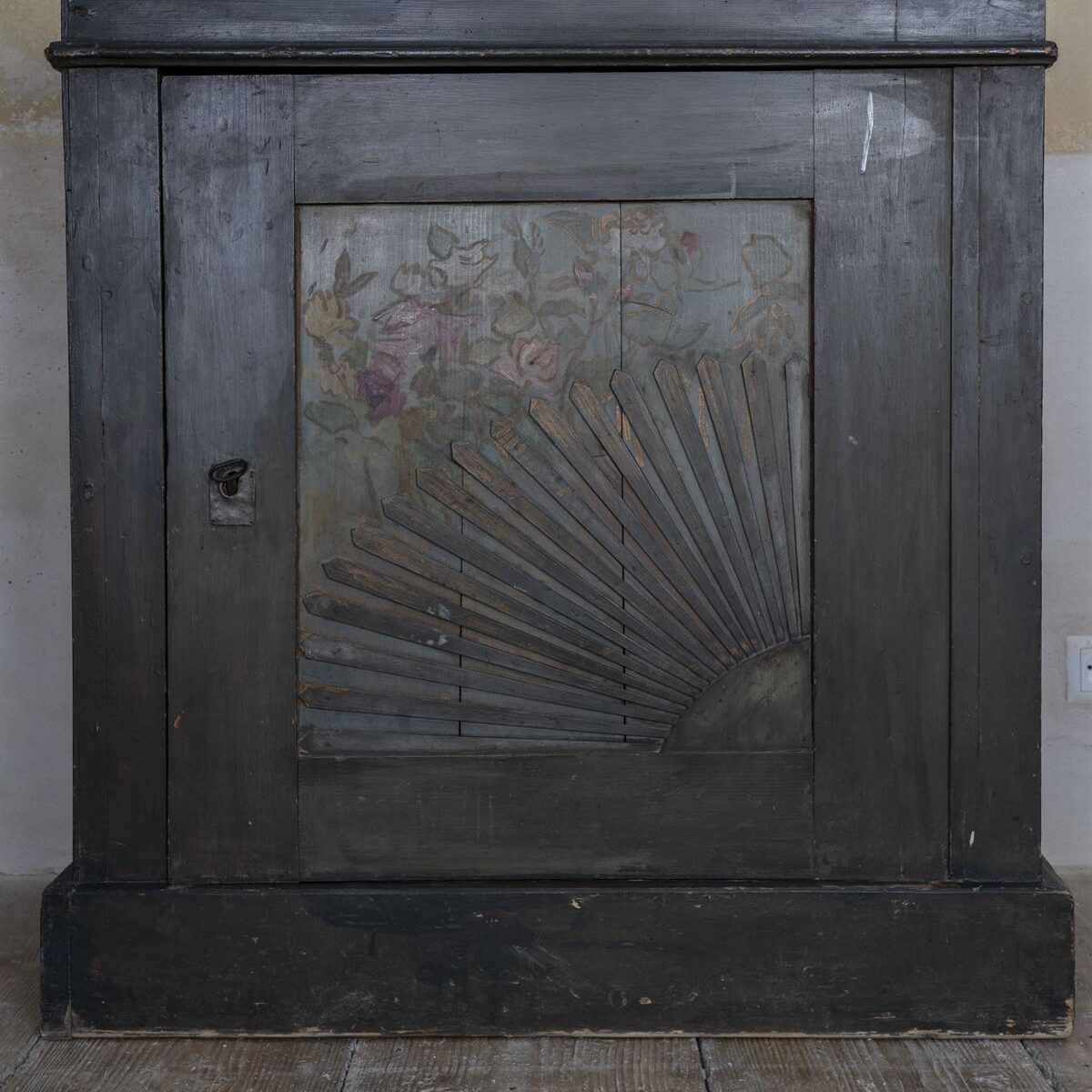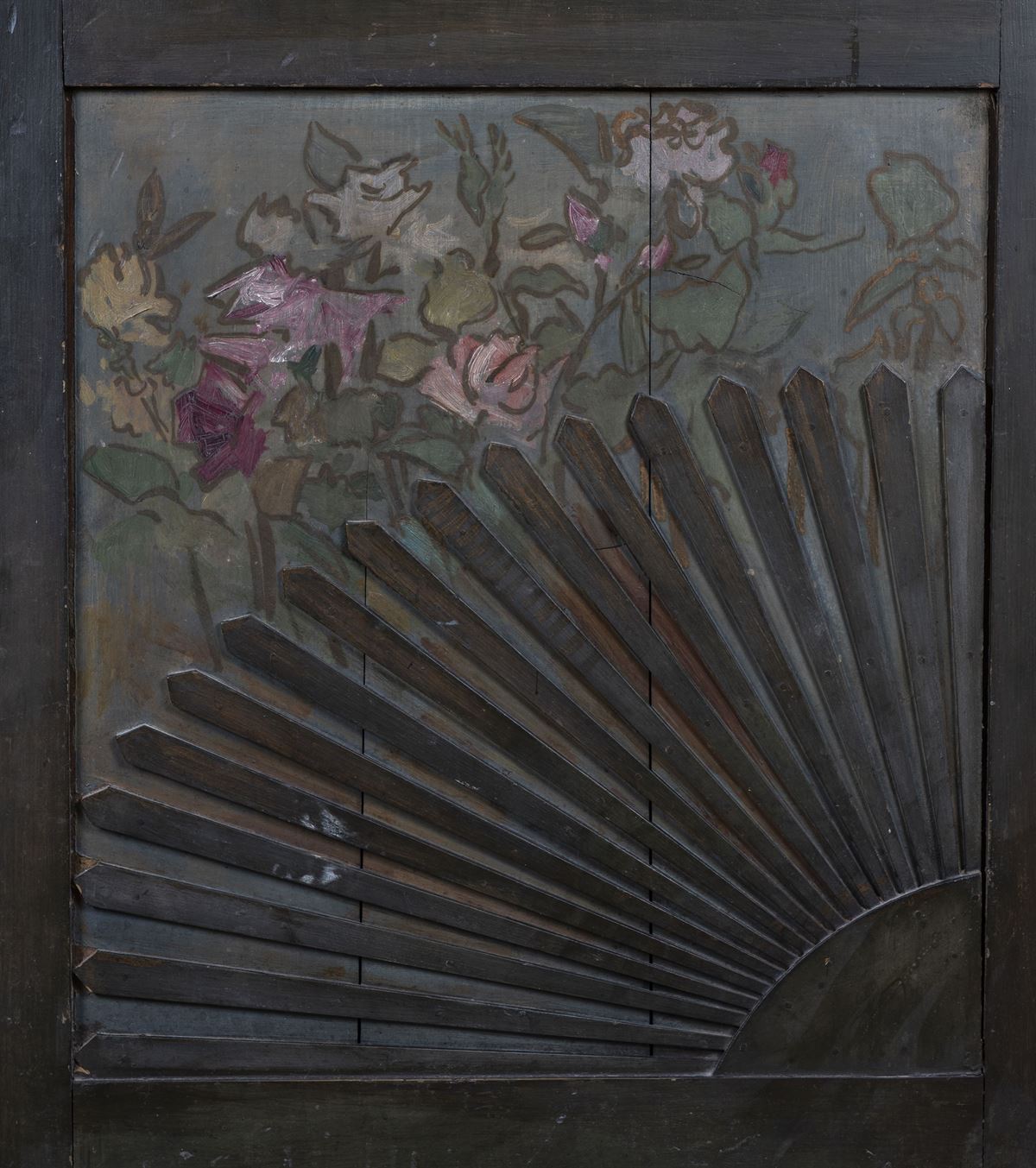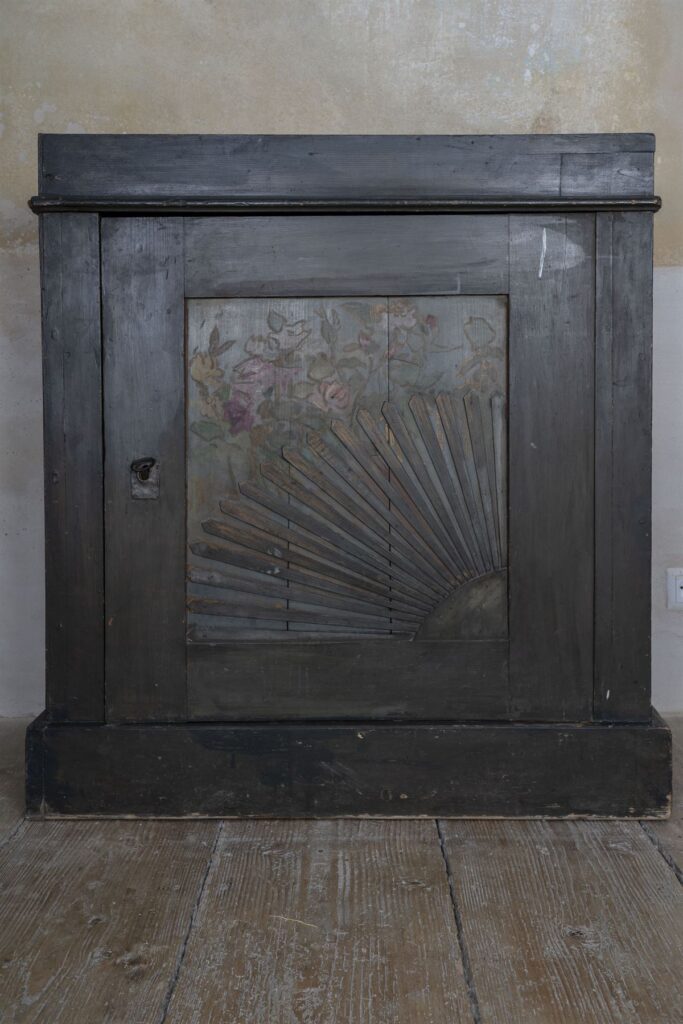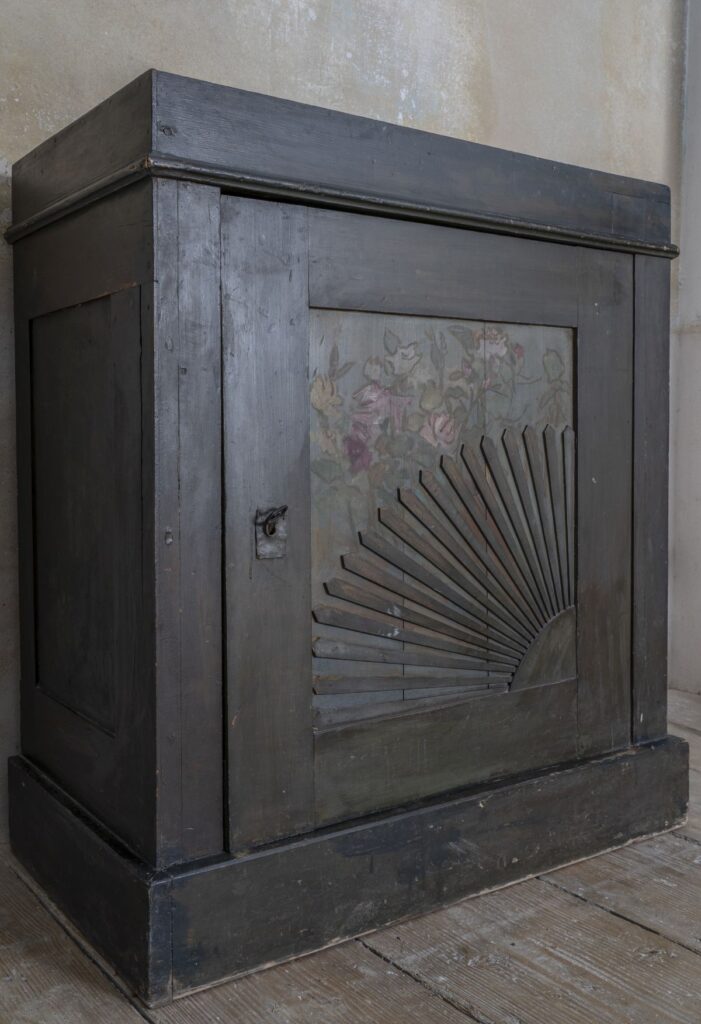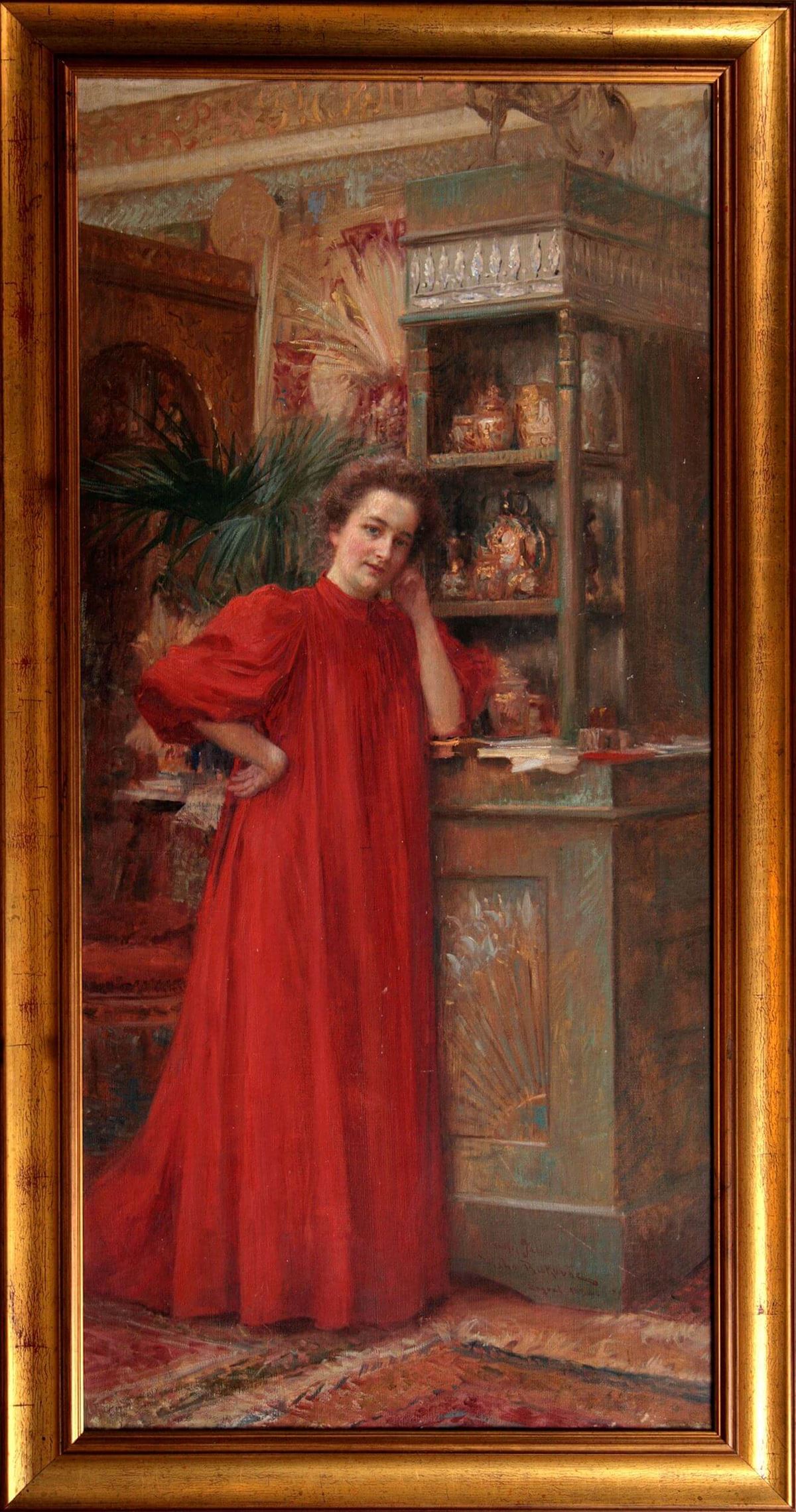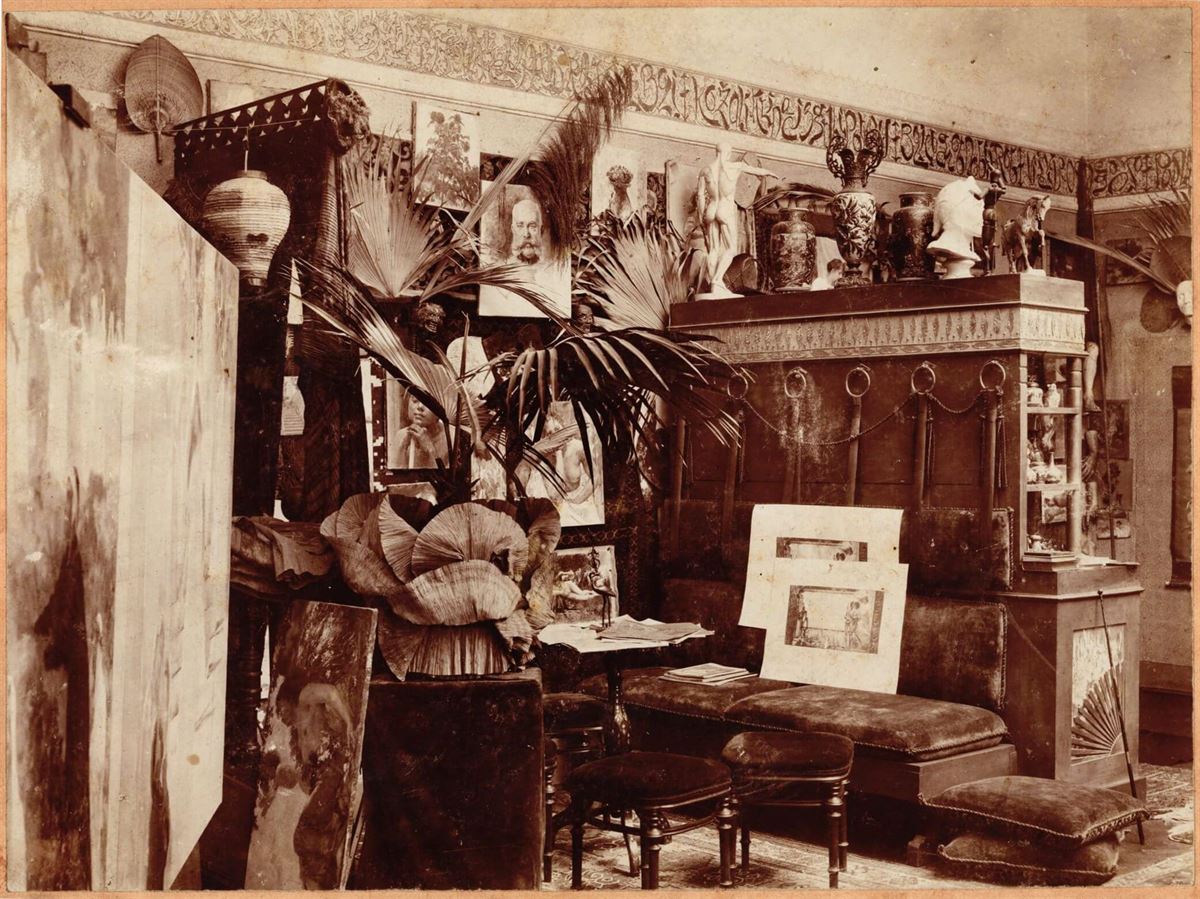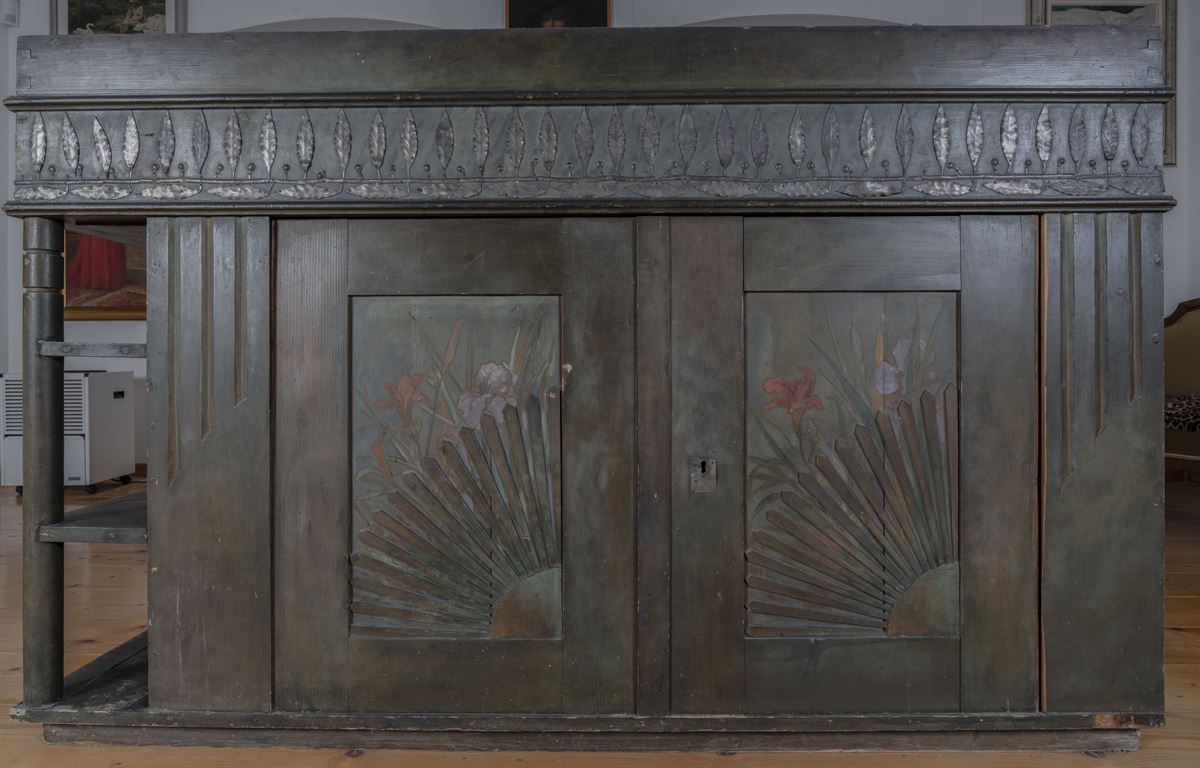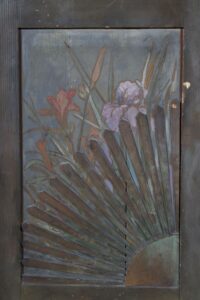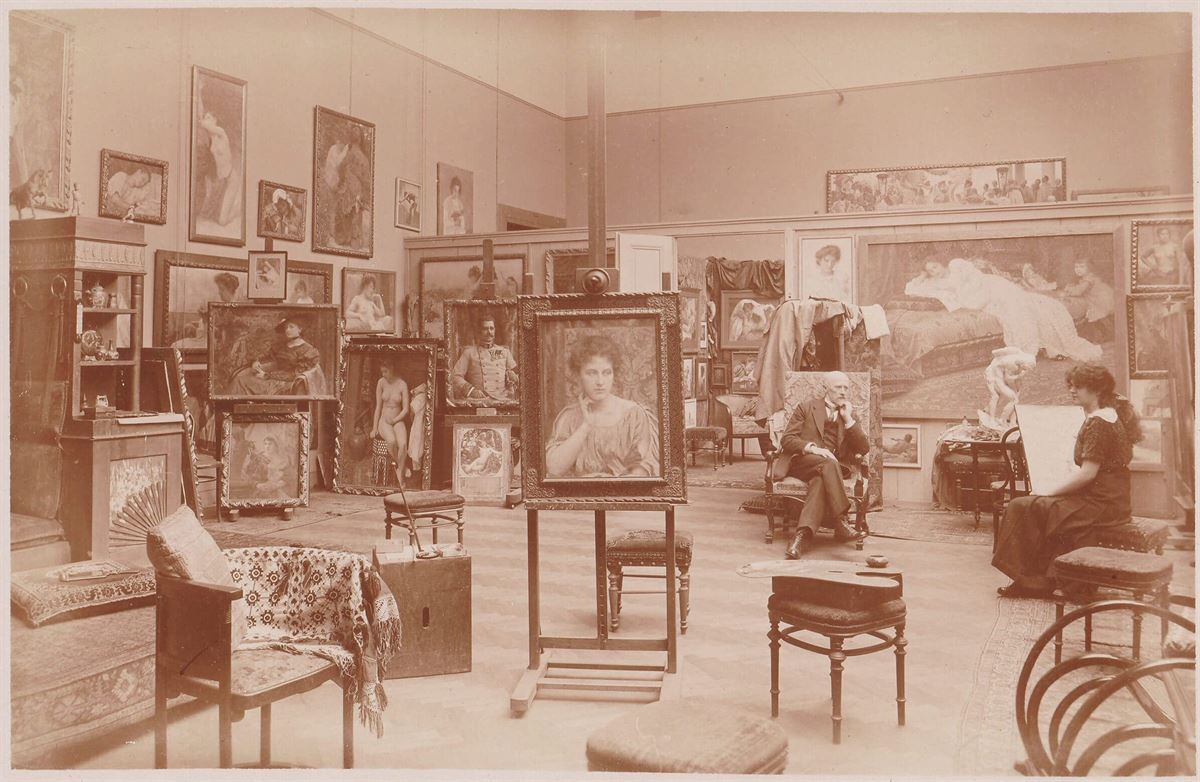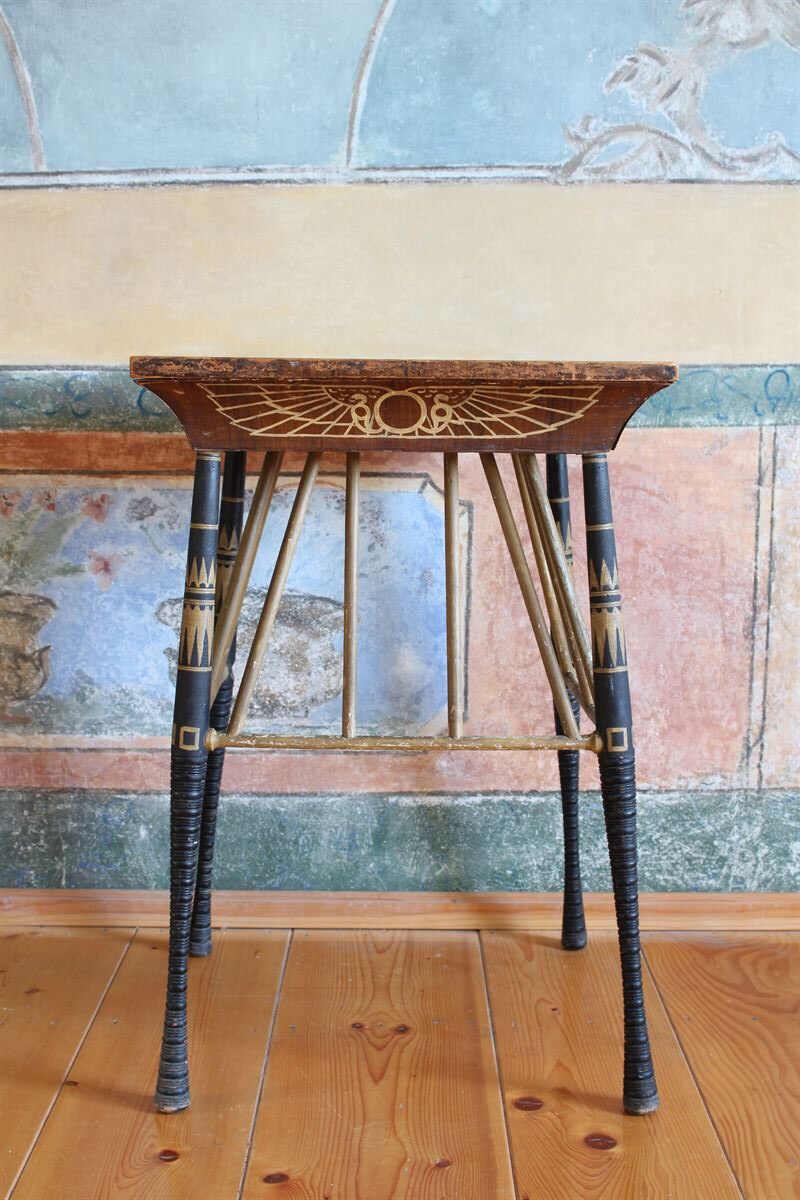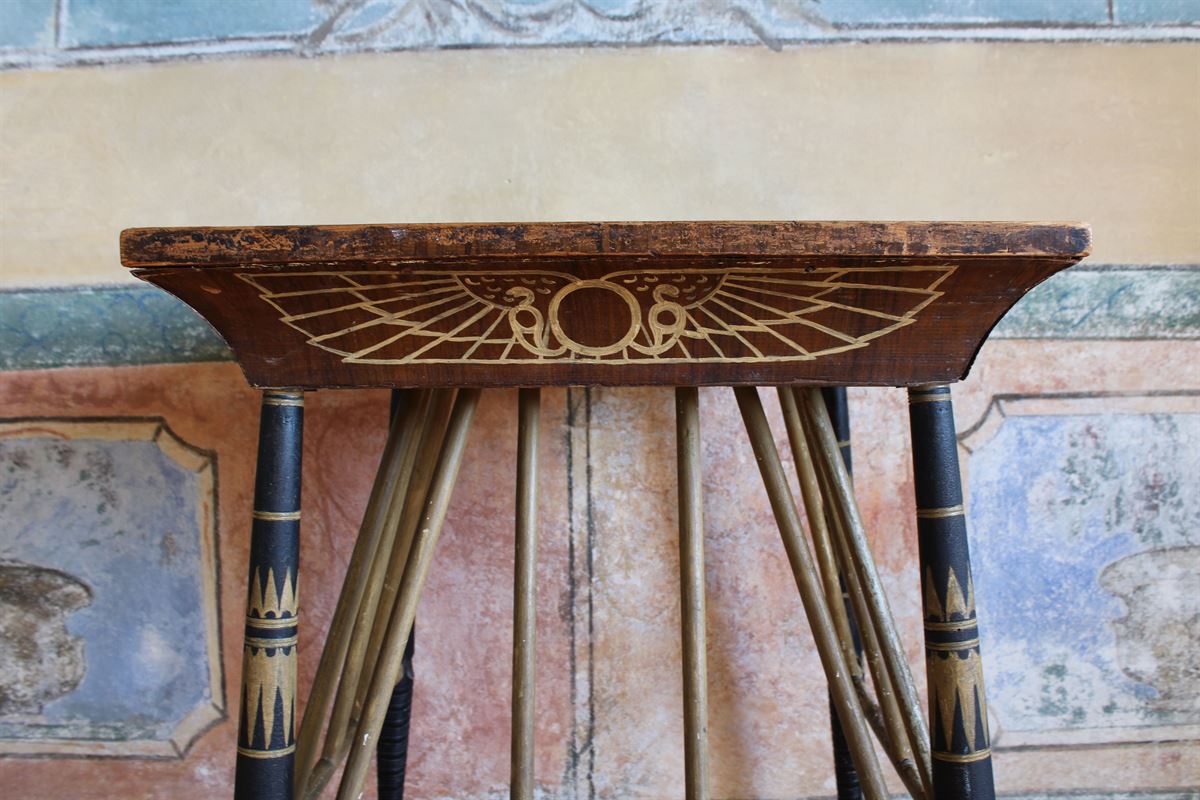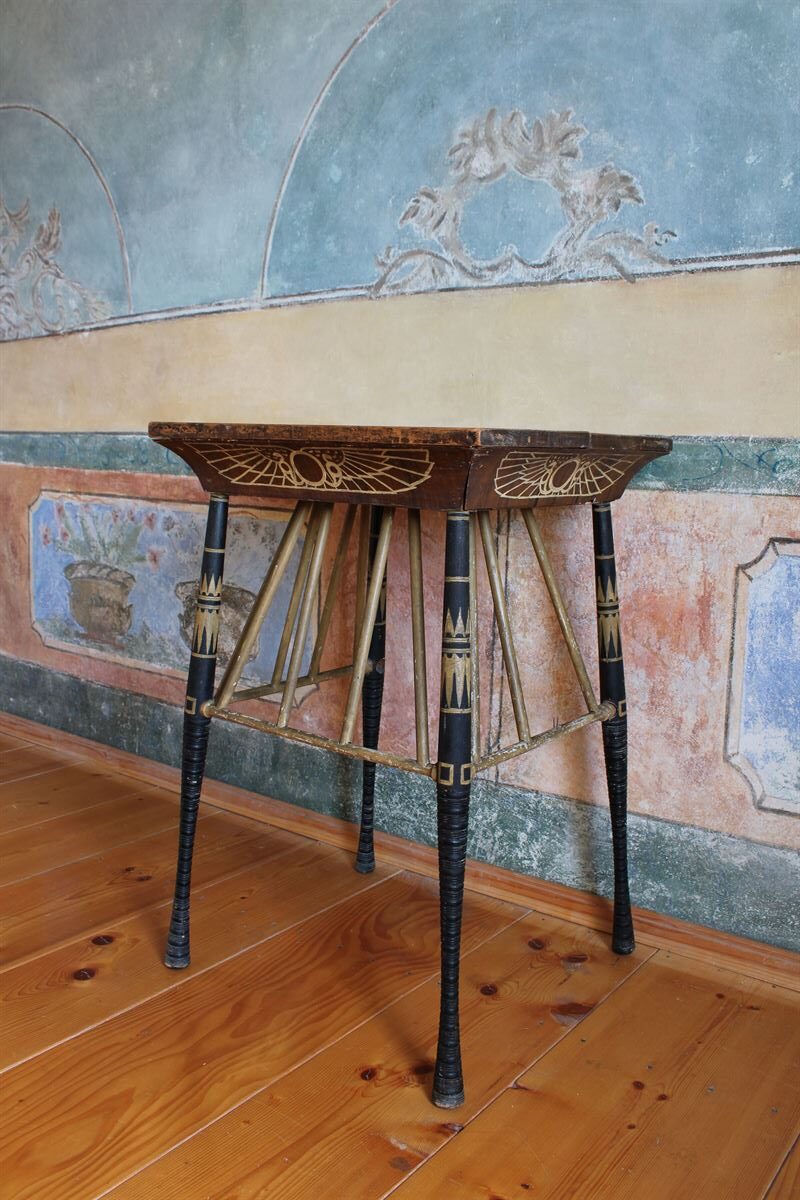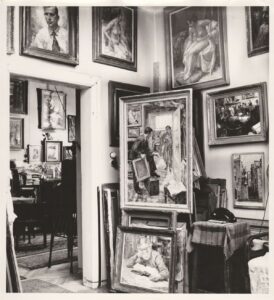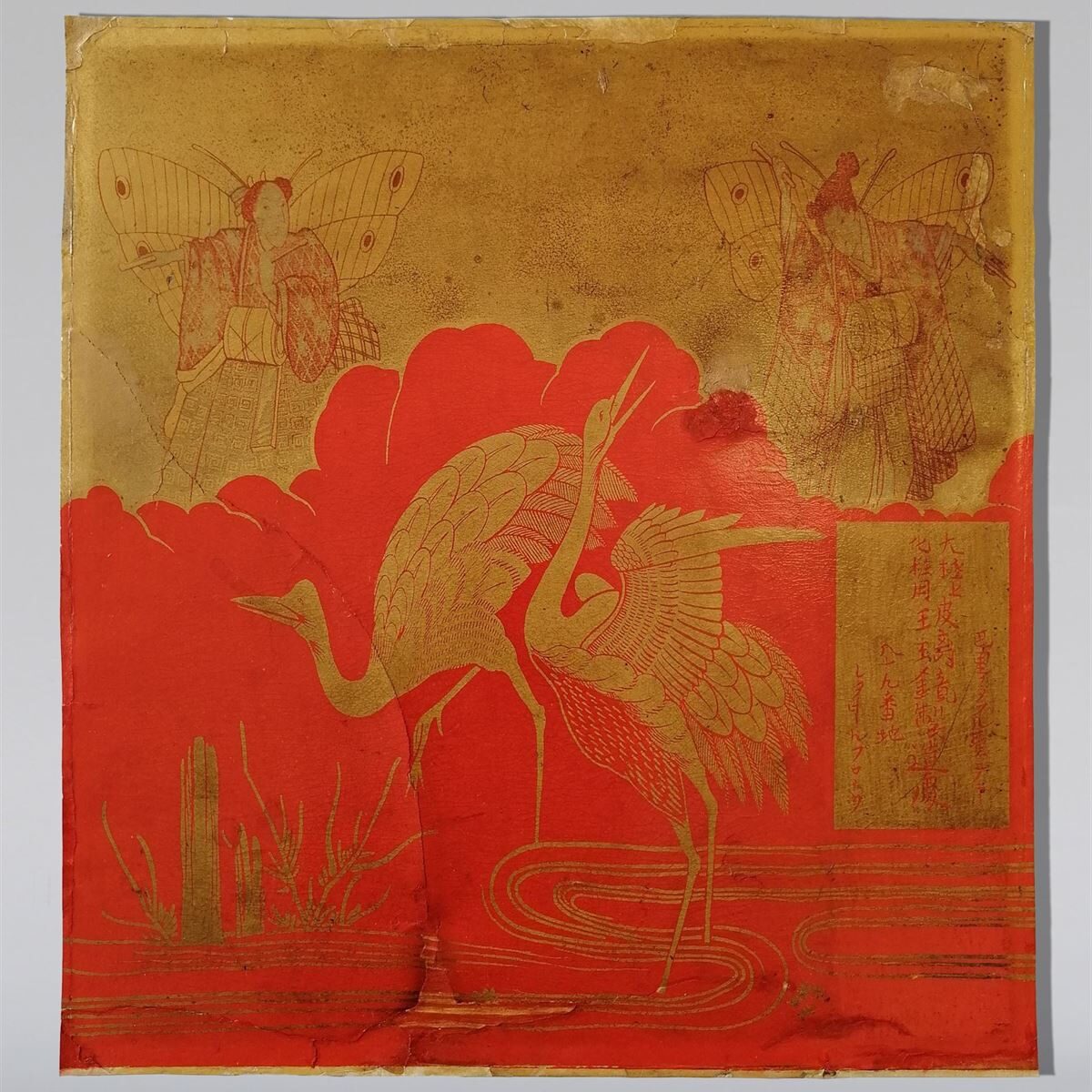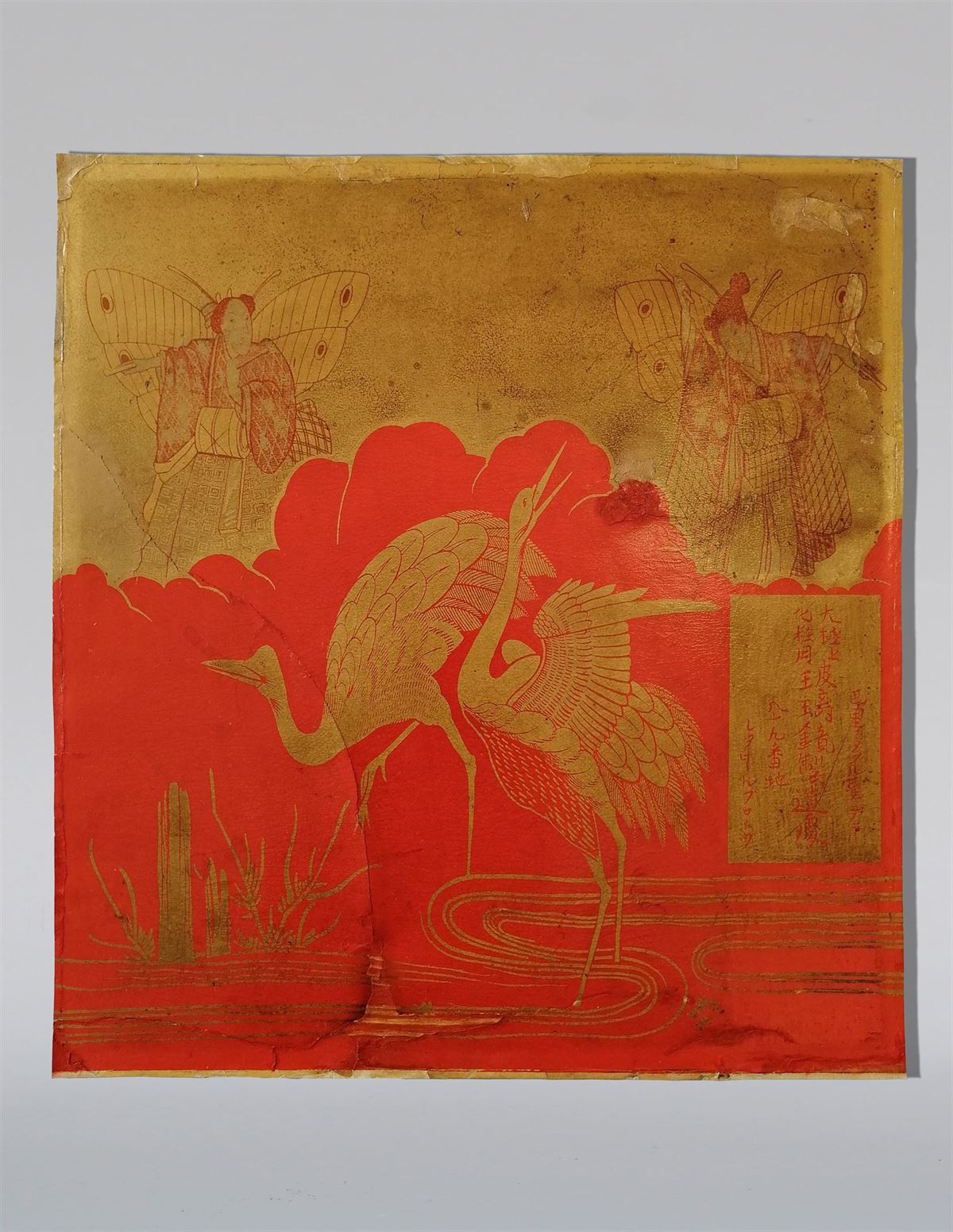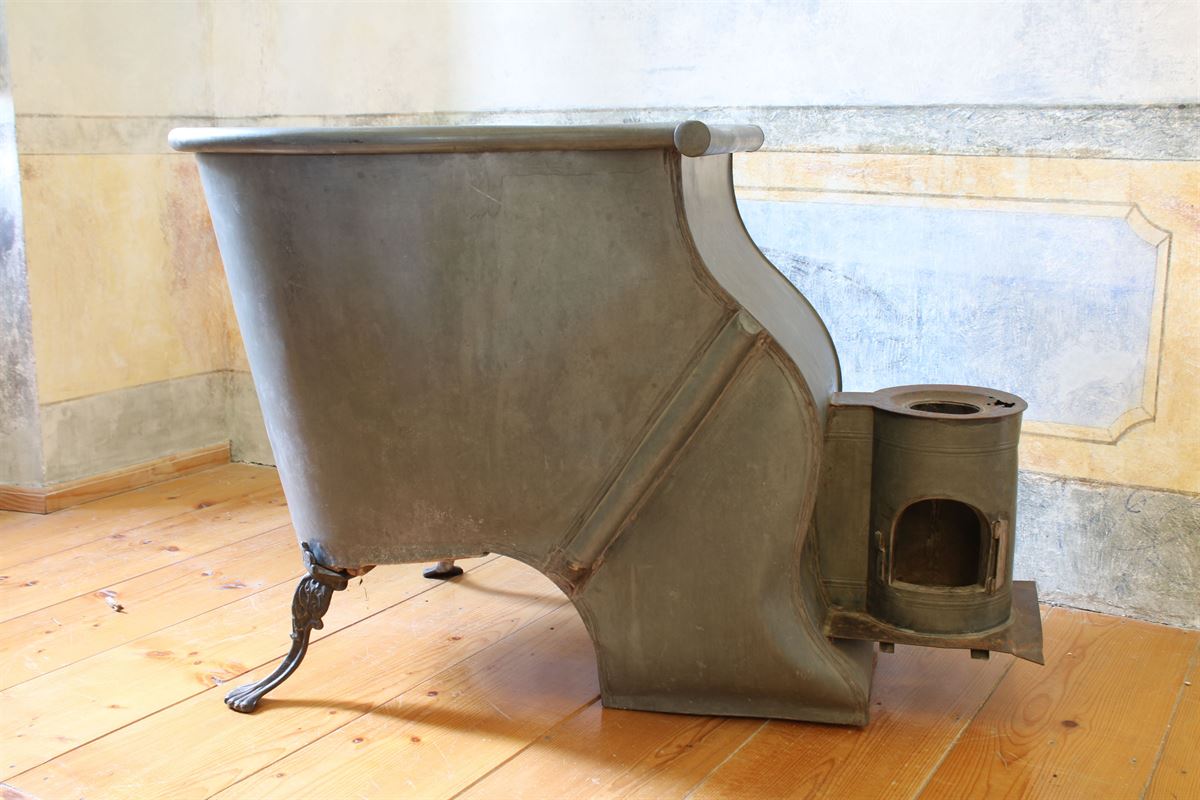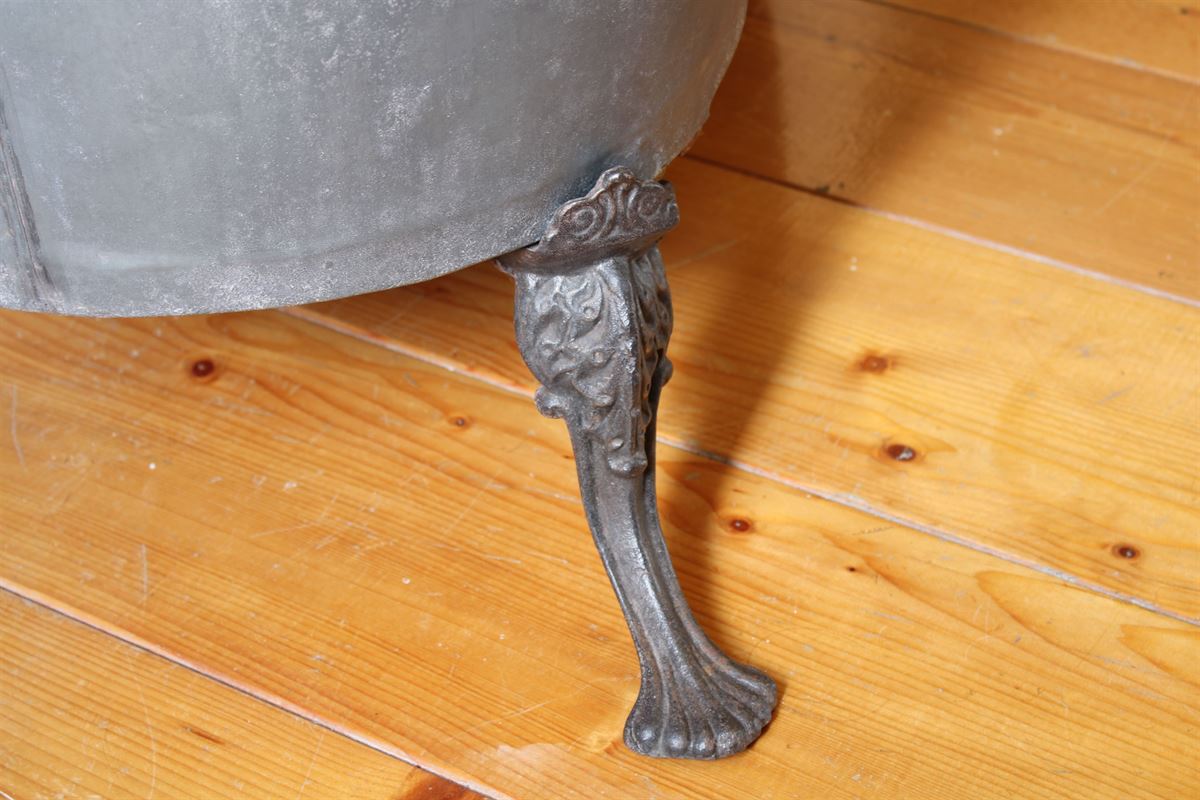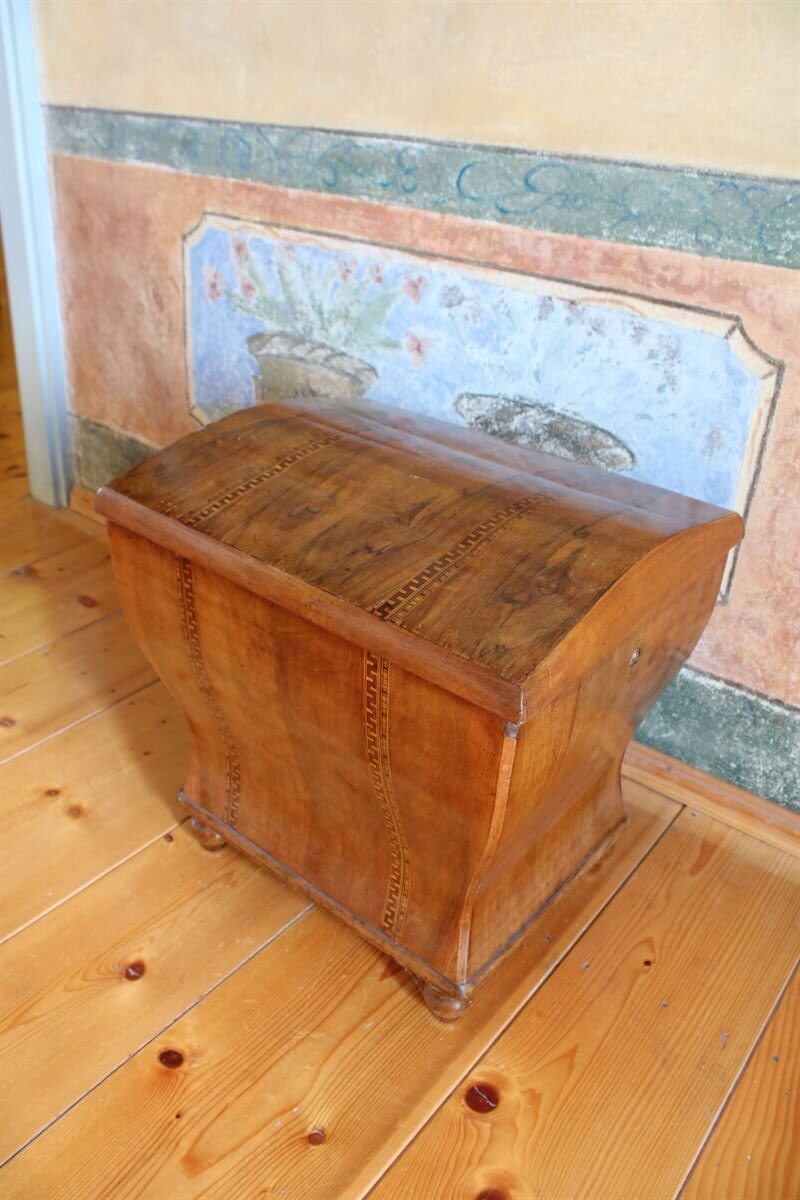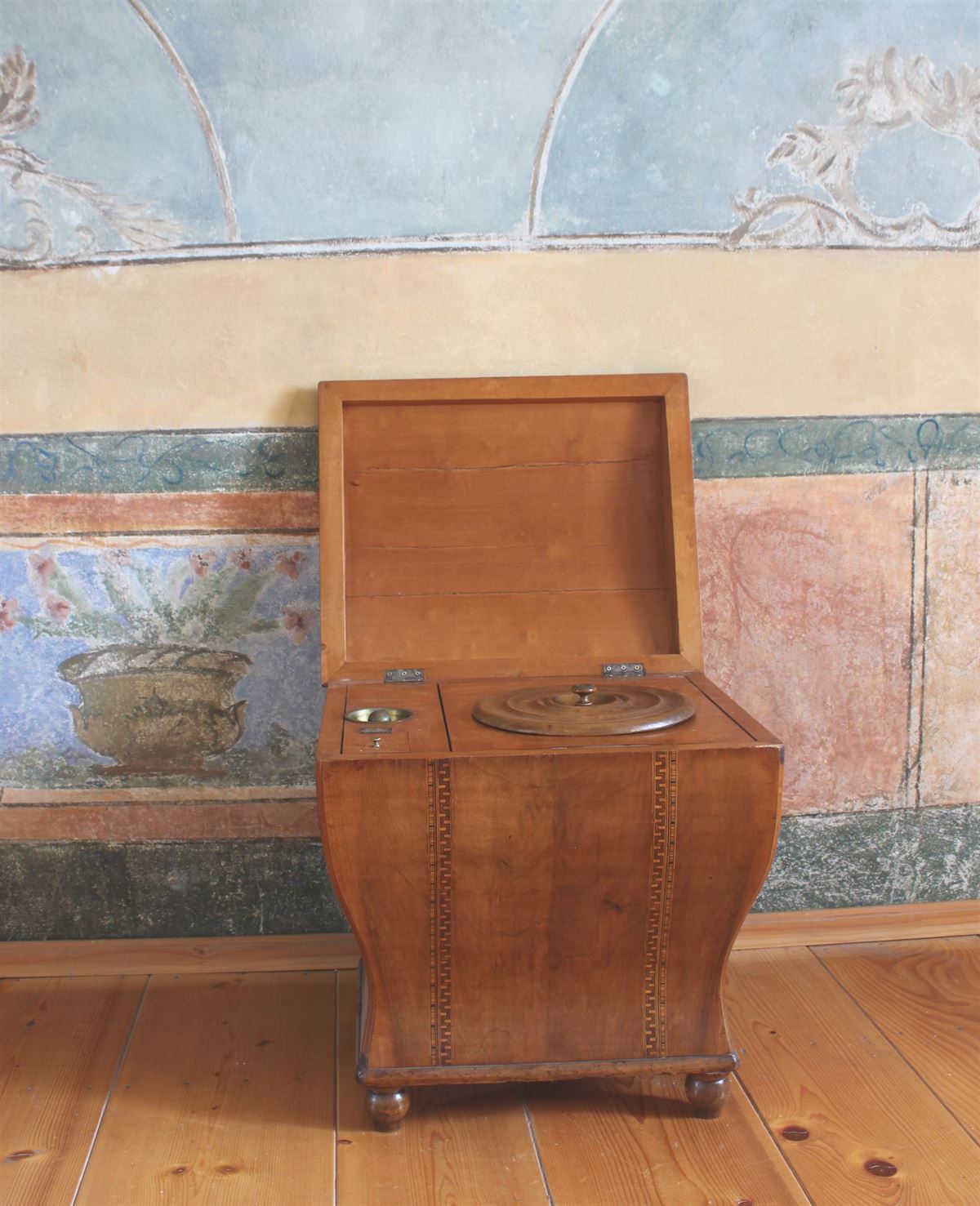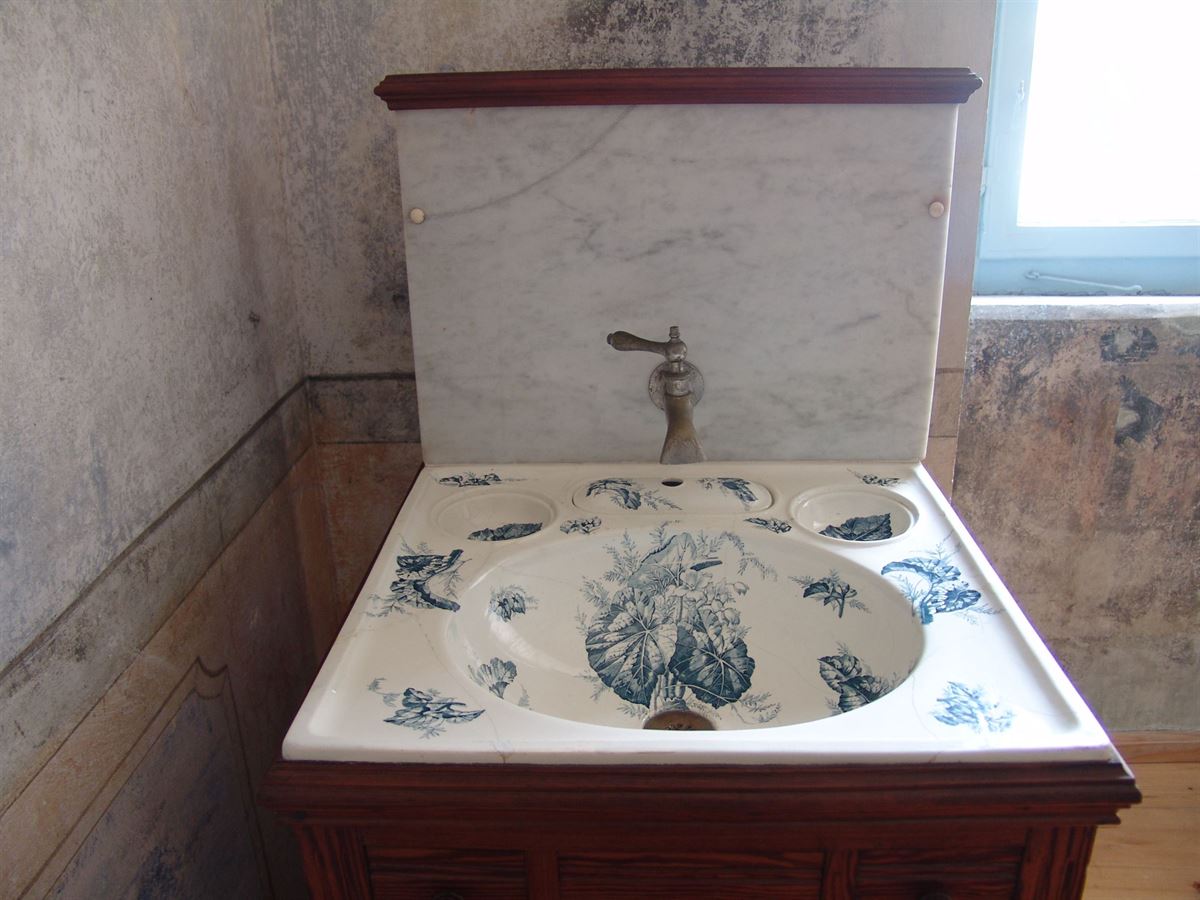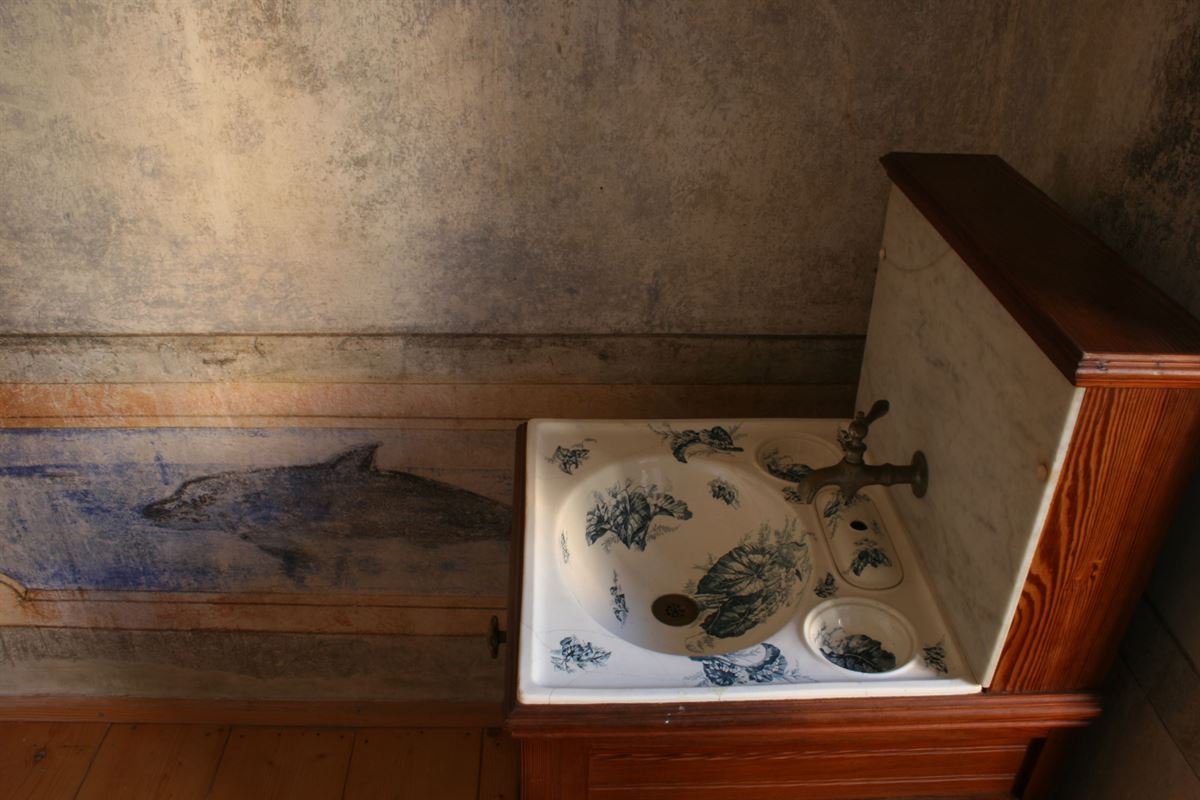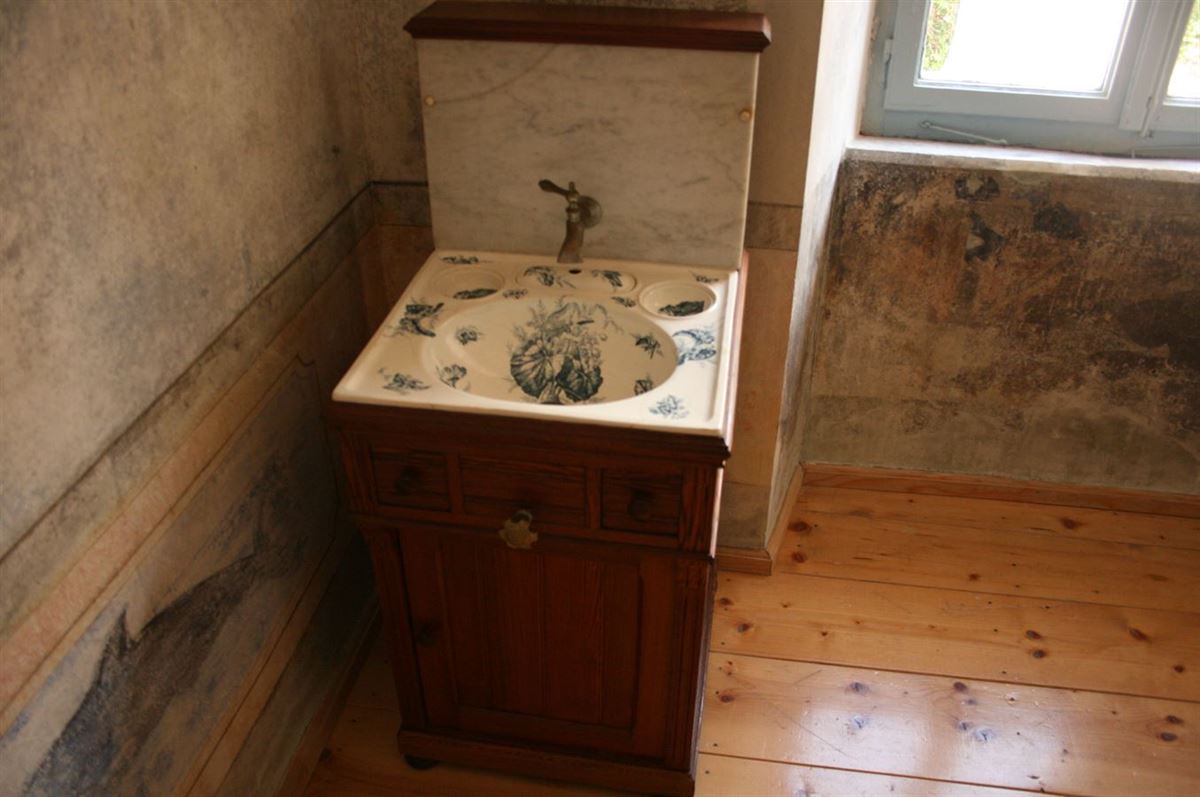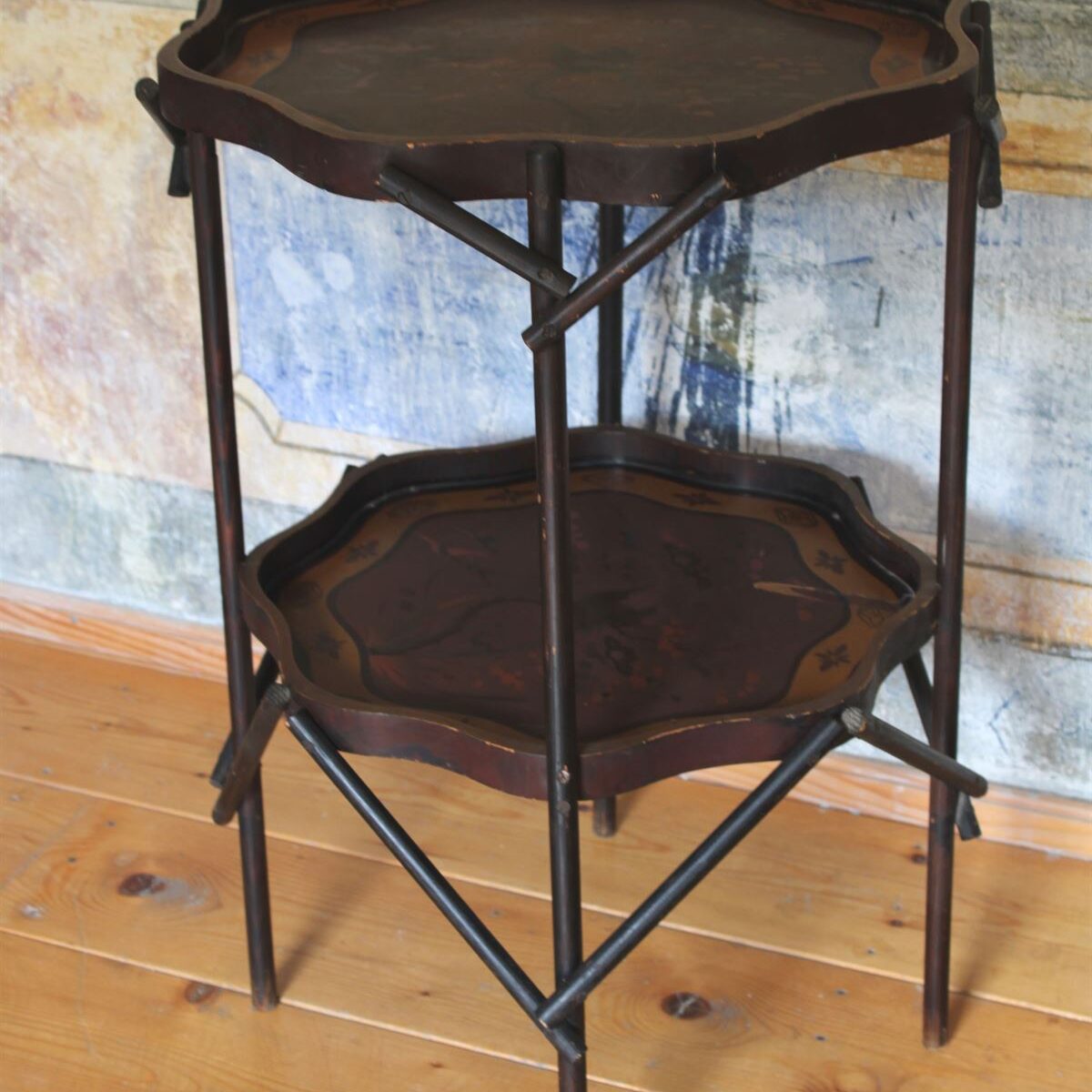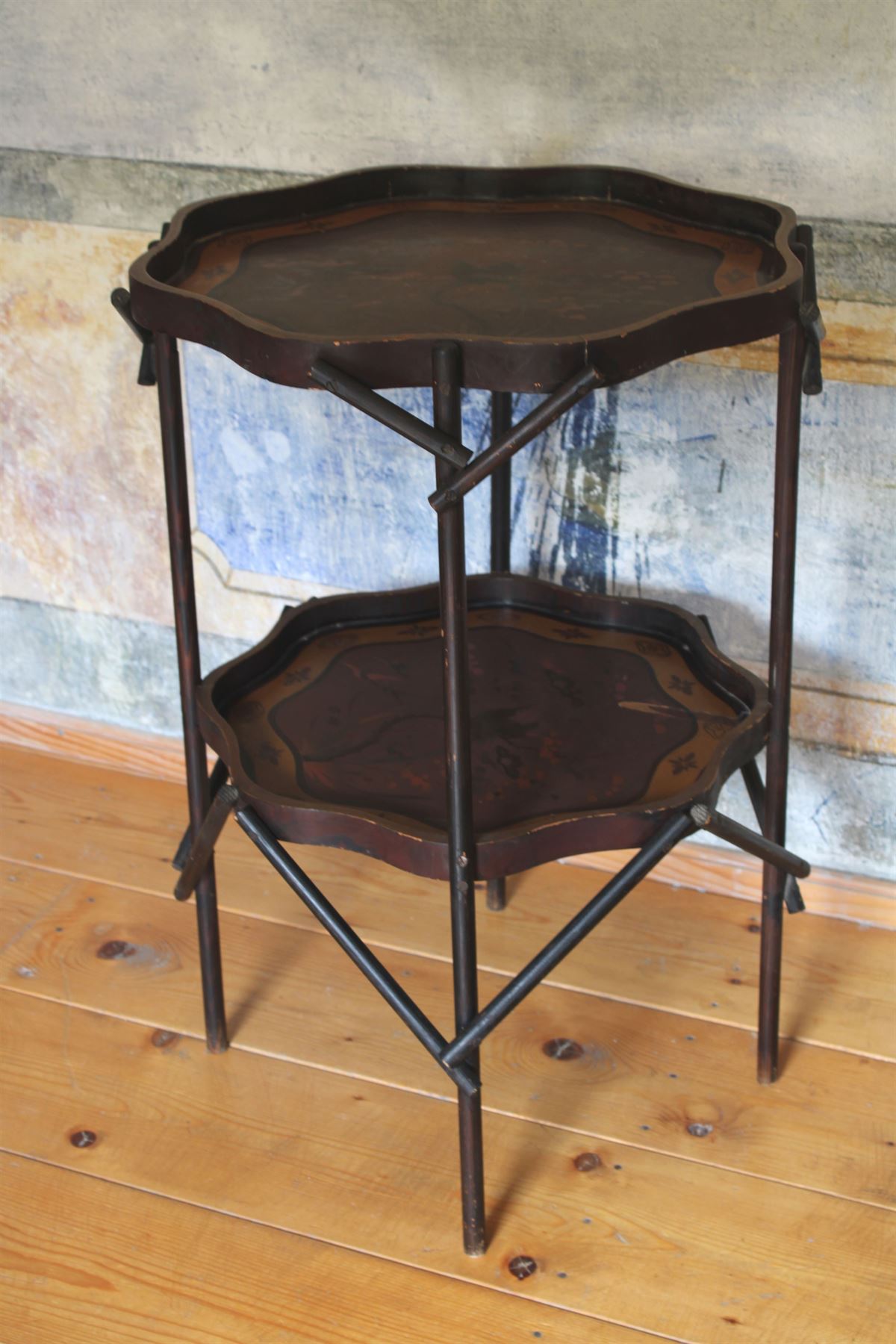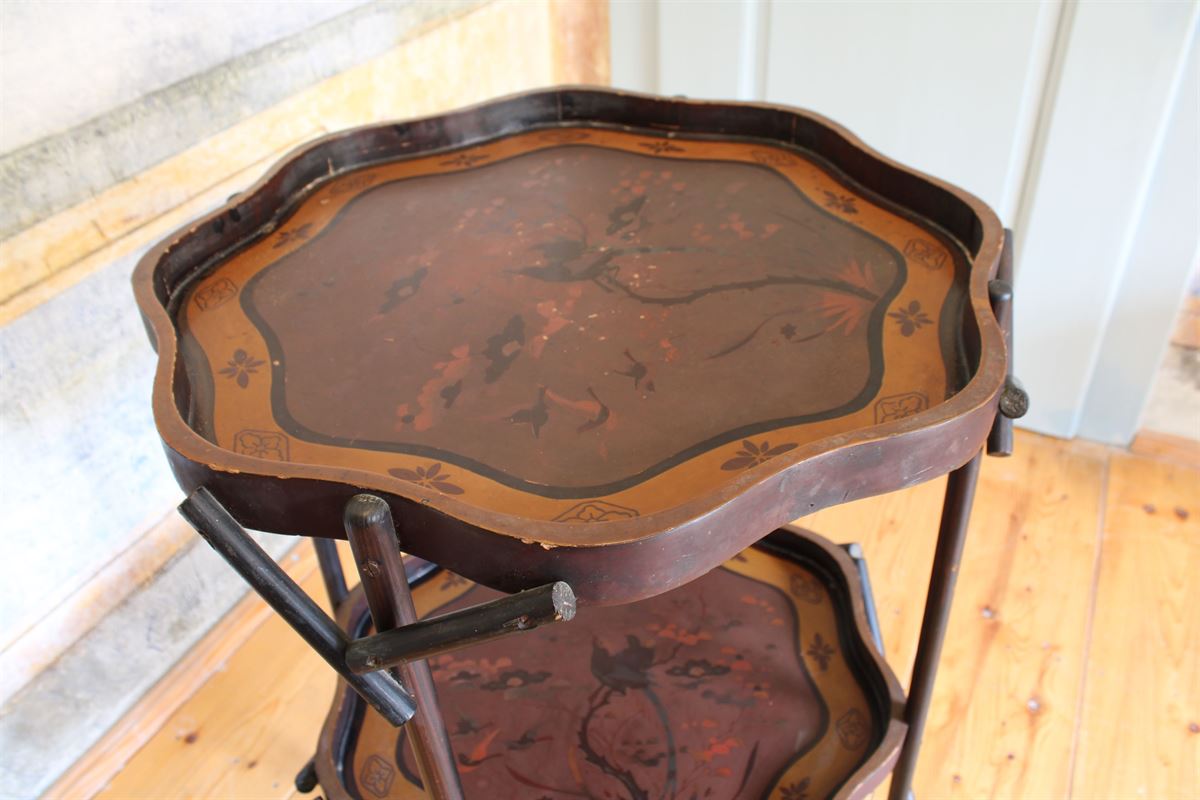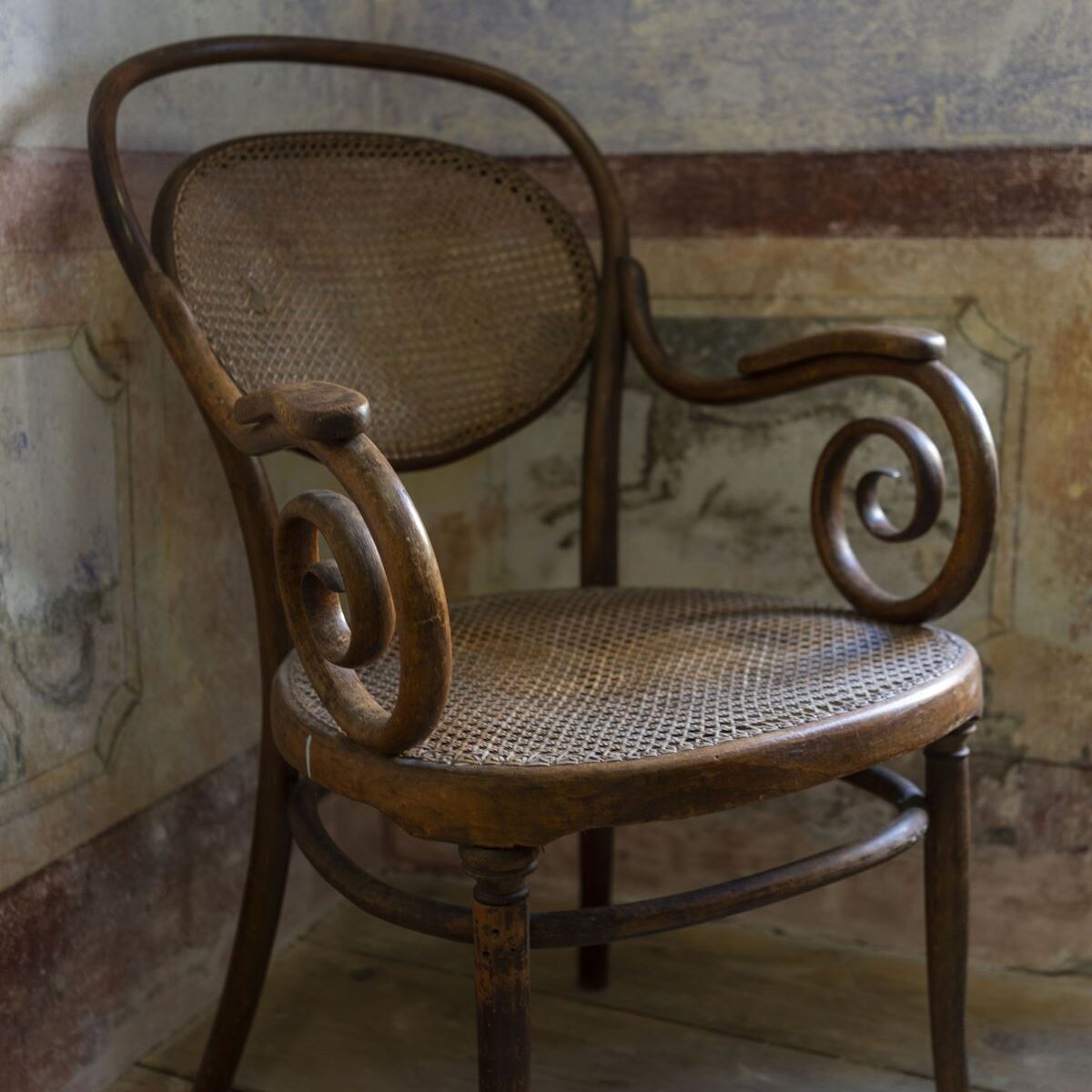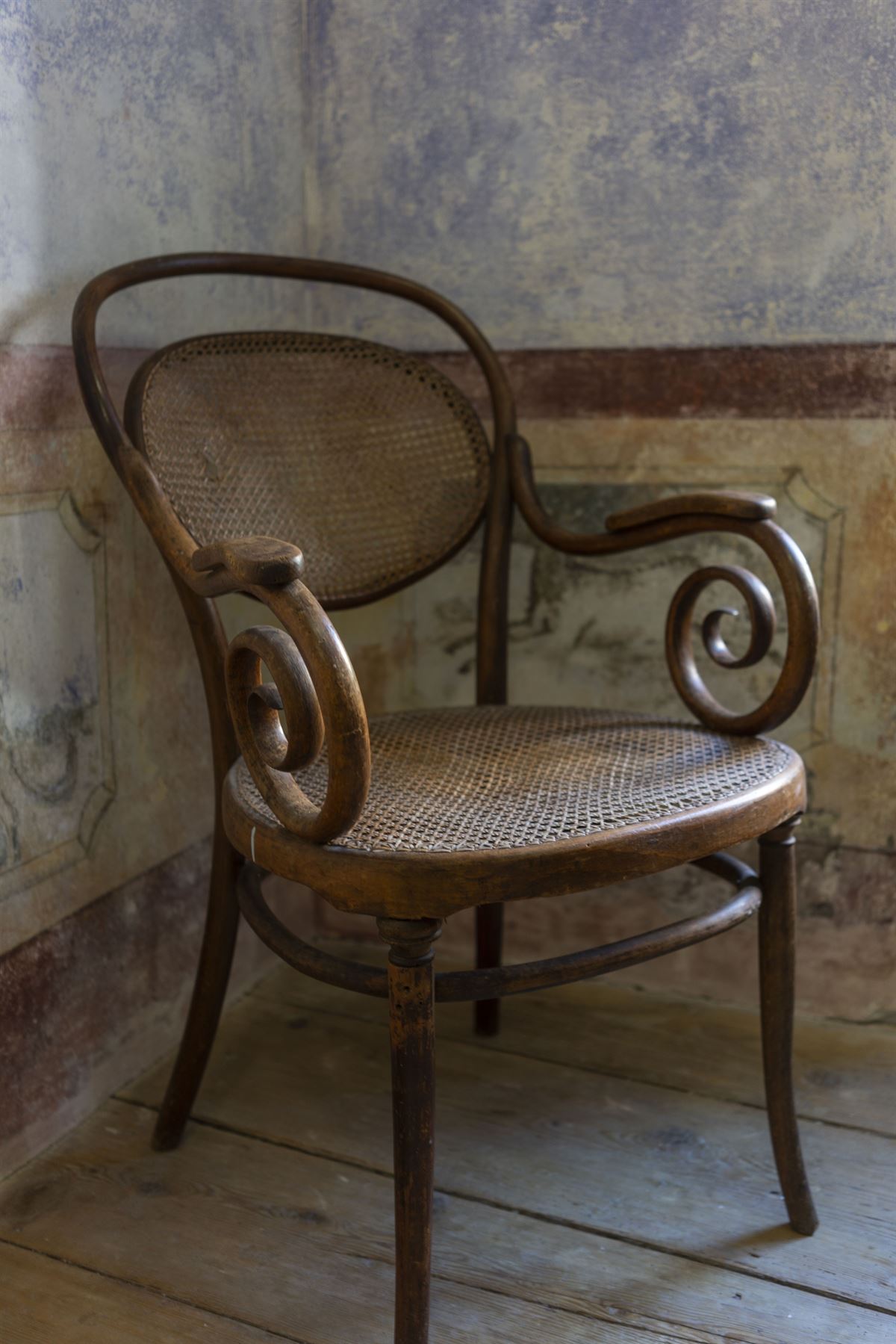Središnji sadržaj
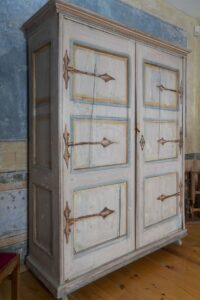 The classicist wooden wardrobe with two wings is painted with simple motifs imitating elements of the wardrobe’s doorframes. It was painted by Vlaho Bukovac. The wardrobe is painted in a light greyish-blue tone, and on the doorframes, stylised hinges are painted in brown tones. The painting divides the simple doorframe surfaces into three simple quadrilaterals in the form of stamped seals.
The classicist wooden wardrobe with two wings is painted with simple motifs imitating elements of the wardrobe’s doorframes. It was painted by Vlaho Bukovac. The wardrobe is painted in a light greyish-blue tone, and on the doorframes, stylised hinges are painted in brown tones. The painting divides the simple doorframe surfaces into three simple quadrilaterals in the form of stamped seals.
Bukovac’s interest in interior decoration began in his childhood by painting the walls of the family home and embellishing furniture. By painting these objects, Bukovac adapted them to the architecture, creating cohesive units that revealed the master’s sensitivity. In his later life, Bukovac became widely known as a master of decorative compositions.


